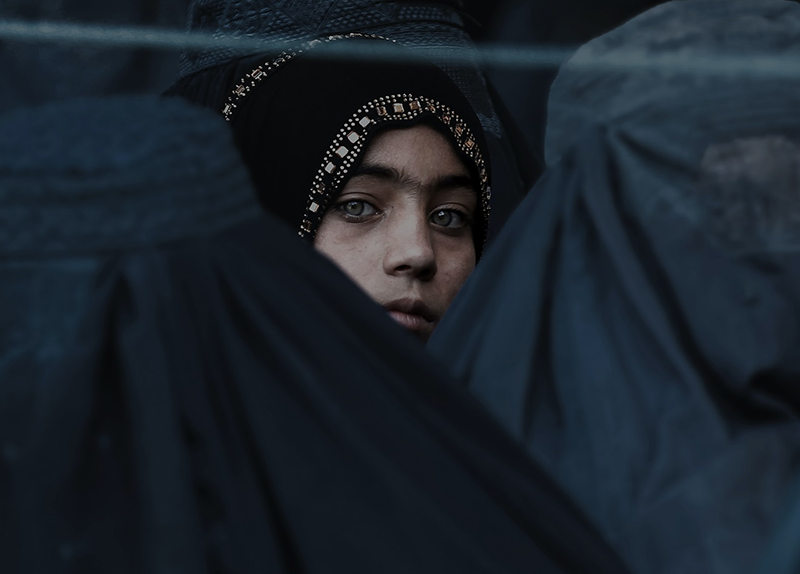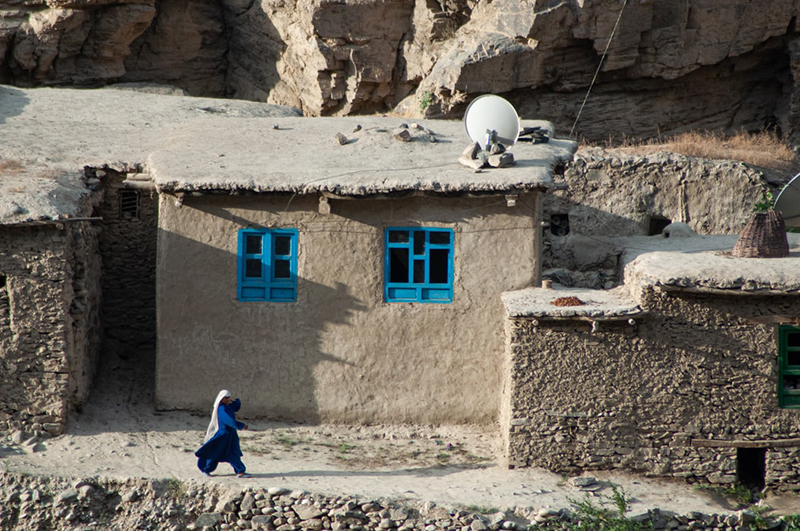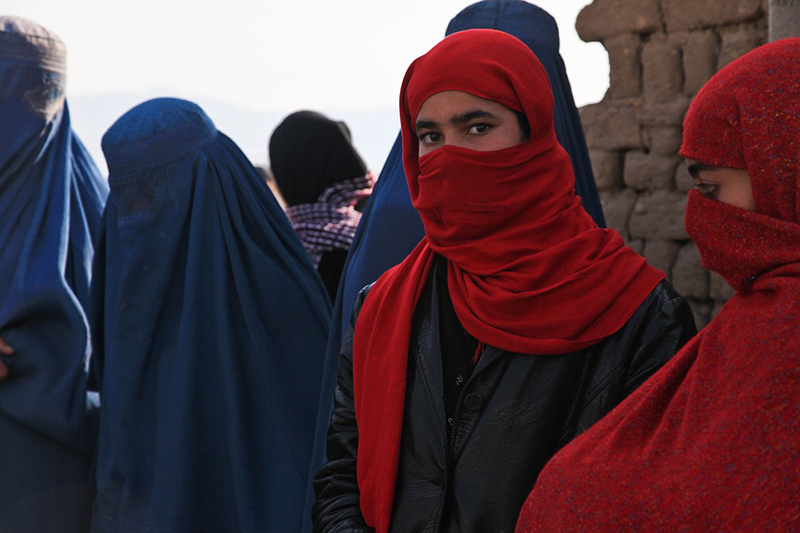 Afghanistan Women.
Afghanistan Women. Afghanistan Women: Where are they now?
As the remarkable two-decades-long journey of the women of Afghanistan comes to a rude halt, Jayalakshmi Sengupta recalls her time in the war-torn country with Miriam and Marzia, Zulia and Zainab- story makers and storytellers, those who created history and those who chronicled them.
2001. What a year for Afghanistan! Finally, with the Taliban ousted, the transitional government welcomed developmental actors to pick up the threads and rebuild Afghanistan, brick by brick. While soldiers moved in to help with the reconstruction and security, development experts focused on governance and state-building efforts.
Free expression found wings again and this led to a rapid growth of the free media. The women who were forced to stay indoors during the oppressive Taliban regime came to the fore to tell their stories and express their needs and aspirations under the new democratic regime.
Some of these women would eventually become powerful voices of the new era in Afghanistan. They would speak on behalf of others and fight for autonomy, education, life-choices, and growth opportunities. These women journalists would become the chroniclers of their time, diligently documenting the struggles and achievements of the women of Afghanistan during the two decades in the post-Taliban era.
I happened to be leading a media development programme in Afghanistan for Aga Khan Foundation (AKF) during this period. The member agency of Aga Khan Development Network (AKDN), with the largest multi-sectoral development programme and a commitment to spend over US$1 billion in development assistance to the country, initiated it in four of the seven provinces it had its presence: Badakshan, Baglan, Bamyan and Takhar in norther Afghanistan.
My own task was to train the vernacular press to write impactful development stories with a focus on women. Learning the craft from P. Sainath (Everybody loves a Good Drought), it was now my turn to take his invaluable teachings across to the Hindukush- to make participants understand what goes in the name of development and, why development strategies more often than not, fail to improve life and livelihood of the poor.
 Unsplash
Unsplash
As part of the training, we went to the remotest corners of these four provinces to document how women were taking charge of their lives. More and more women were coming out of their cocoon to work as teachers, tailors, carpenters, poultry farmers, nurses, and so on. Women athletes too were on the rise.
Of the innumerable heroic stories, the one that touched me most was from the far-flung Sheebar village in remote Bamiyan, where we found a self-help group (SHG). What was extraordinary about this group was that it comprised illiterate women, excepting for 65-year-old group leader Malika, a school teacher,and 14-year-old Marzia, an eighth standard student, who helped with the book-keeping.
Malika was a rare and exceptionally inspiring figure from this remote, unfriendly mountainous region. She was instrumental in getting the women group together despite the ingrained distrust attached to loans and interests among followers of Islam. It was a huge hurdle to make the vast majority of the uneducated people understand the concept of microfinance. But the idea obviously made sense and eventually the initiative swept over 11 districts.
It made sense because in war-ravaged Afghanistan a large number of families were women-headed. In the advent of any crisis, the women were forced to liquidate their meagre assets, beg and borrow, and end up in a vicious poverty trap. This easy saving and credit facility had brought them a huge respite.
The success stories went on to report how more and more women had started borrowing money to send their children to school and to buy nutritional food; how they were buying cows and poultry, better seeds and fertilisers. Some even opened grocery stores and flour mills-finally investing in productive assets.
My heart skips a beat to think what will happen to those women now, what will happen to those projects and what will happen to the storytellers, my firebrand journalist friends from Afghanistan.
I recall asking Zulia, Farooqa, and Zainab what they remembered of the Taliban rule from 1996-2001, when women were subjected to severe restrictions and banned from working. Zainab recalled how her co-ed school had been shut down overnight and how teachers insisted even little girls covered their heads. She had turned eight that year.
They had to walk several miles to the school, which was not considered safe. Someone or the other had to accompany them. People with grown up daughters, would desperately look for suitable grooms, lest they were taken away as mistresses and sex slaves.
Stories of torture and execution were common, but Faizabad had not seen as much upheaval. Because of its inhospitable terrain, the Taliban had failed to control it fully. But insecurity and fear were writ large. While Nadia recalled watching American movies in a basement room to improve her English, Anis shared the struggle to study and work and the challenges of running a home.
 Pixabay
Pixabay
When I met Zulia for the first time, I was surprised to see how westernised she was under her blue burqa. I was astonished to hear tales of the women as old as their grandmothers who grew up in Kabul. The city had enjoyed the best of European and Persian influences. Zulia’s grandmother was a poet and an activist who had fought for women’s rights in her college days.
There are pictures of her in short hair and short skirts. She spoke French and English, in addition to local Dari and loved dancing to jazz music, which was common in Kabul. She had ensured all her daughters were professionally qualified as well. While Zulia’s mom ran a tailoring business, her sister became a doctor.
Zulia was pursuing journalism and wanted to work at the policy level someday. Incidentally her first question on meeting me was if I had Microsoft publisher in my laptop to help her design the magazine she was editing.
2021. One of the most beautiful countries of Asia, with the most gorgeous and resilient women will probably see the clock turn back. Dozens of journalists are fleeing to different parts of the world.
Farida Nekzad, Director of Centre for the Protection of Afghan Women Journalists (CPAWJ) established as the first women reporters’ network, in cooperation the Reporters Sans Frontier (RSF), recently urged the international community working on human rights and especially, women's rights and freedom of expression, to come forward and create policies to support women journalists in strife-torn dangerous areas like in Afghanistan.
Farida, who continues to write even after facing abduction has been an inspiration to young Afghan women journalists. However, even a veteran journalist like Farida knows Afghanistan is sitting on a time bomb. The donor communities may stop aid but if they stop dialoguing with the Taliban, they will lose their leverage to help preserve the rights of the women in Afghanistan.
Without aid and support, the women of Afghanistan will not only lose out on all the progresses made in the last two decades, they will lose all hope and meaning in life.
How I long to be with Miriam and Marzia, Zulia and Zainab again. And, write their everyday stories of hopes and dreams, peace and growth. Where are they now? How are they?
Support Our Journalism
We cannot do without you.. your contribution supports unbiased journalism
IBNS is not driven by any ism- not wokeism, not racism, not skewed secularism, not hyper right-wing or left liberal ideals, nor by any hardline religious beliefs or hyper nationalism. We want to serve you good old objective news, as they are. We do not judge or preach. We let people decide for themselves. We only try to present factual and well-sourced news.







